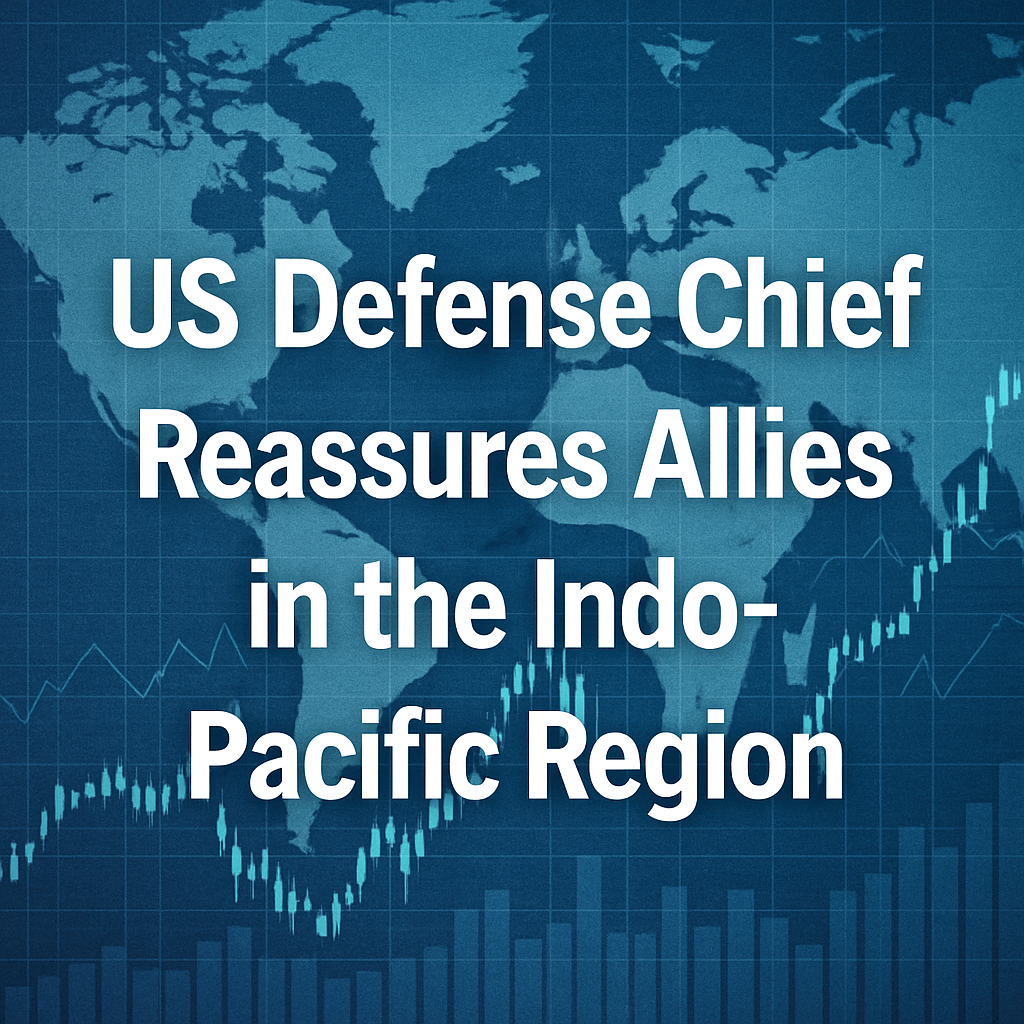US Defense Chief Reassures Allies in the Indo-Pacific Region

On Saturday at the Shangri-La Dialogue, a prominent security conference held in Singapore, U.S. Defense Secretary Pete Hegseth emphasized the unwavering commitment of the United States to support its allies in the Indo-Pacific region amid increasing military and economic pressures exerted by China. He reiterated Washington’s determination to enhance its defense posture while calling on regional allies to increase their own defense spending and capabilities.
Concerns Over China’s Military Activities
During his keynote address, Hegseth made candid remarks about the evolving nature of threats posed by the People’s Liberation Army (PLA), specifically highlighting its enhanced military readiness regarding Taiwan. “China’s army is rehearsing for the real deal,” he stated, referencing military exercises that simulate a blockade of Taiwan. This self-governing island is claimed by China and is under U.S. protection. Hegseth’s comments underline concerns that Beijing may be planning for aggressive actions, potentially as early as 2027.
The U.S. Department of Defense has observed that China is not merely augmenting its military force but is now actively conducting drills aimed at preparing for an invasion. According to experts, Taiwan’s strategic importance goes beyond regional geopolitics, representing a focal point for a broader U.S.-China rivalry.
Beijing’s Response to Accusations
In response to Hegseth’s statements, the head of the Chinese delegation, Rear Adm. Hu Gangfeng, described the U.S. defense chief’s claims as “groundless accusations.” He criticized the United States for propagating narratives that, according to him, distort China’s intentions and actions in the region. China’s stance maintains that its military actions are solely defensive and aimed at ensuring national sovereignty.
China’s Military Aspirations and Regional Implications
In line with its strategic goals, China has built artificial islands in the South China Sea, hosting military installations that bolster its operational presence. This extensive military development also includes advancements in hypersonic weapons technology and satellite capabilities, prompting the U.S. to pursue initiatives like the “Golden Dome” missile defense system to counteract these emerging threats.
- Military Technological Advancements: China’s military modernization has included the development of advanced missile systems capable of striking distant targets swiftly and with high precision. These advancements challenge U.S. military dominance in the region.
- Economic Influence: Besides military maneuvers, China is increasingly involved in economic projects in Latin America, including strategic control over key infrastructure like the Panama Canal, which has significant geopolitical implications.
Call for Increased Defense Spending
Hegseth pointed to a need for Indo-Pacific nations to enhance their defense budgets, advocating for an increase to around 5% of their Gross Domestic Product (GDP), akin to current European defense spending trends. He underscored that collective defense efforts are crucial in deterring potential aggression from Beijing.
Reassessing U.S. Military Commitment
Despite commitments from previous administrations, including the Obama and Biden administrations, to pivot more military resources to the Pacific, critics argue that these goals have not been fully realized. U.S. military assets in the Indo-Pacific have historically been reallocated to other regions, especially in response to escalated conflicts in the Middle East and Eastern Europe, raising questions about Washington’s long-term commitment to Asia-Pacific stability.
For instance, recent reallocations included the transfer of a Patriot missile battery from the Indo-Pacific to U.S. interests in the Middle East, reflecting a dual focus that complicates defense strategies in both theaters. Hegseth defended such moves, stating that the necessity to address immediate threats justified the reallocation of military resources.
Indo-Pacific Nations and Regional Balance
The Indo-Pacific nations find themselves navigating complex relationships with both the U.S. and China. Many countries rely on China for trade while simultaneously expressing trepidation about its aggressive territorial claims and the implications of military posturing in the region. Hegseth highlighted the dangers of economic dependence on China, urging nations to rehearse their own defense capabilities.
Local leaders, including Australia’s Defense Minister Richard Marles, echoed the necessity for collective security efforts. Marles noted that while the U.S. is crucial for maintaining regional power balance, countries in the Indo-Pacific must also play proactive roles in their defense strategies.
Conclusion: An Evolving Geopolitical Landscape
The ongoing discourse at events like the Shangri-La Dialogue reflects the shifting geopolitical landscape in the Indo-Pacific. With rising tensions between the U.S. and China, the need for robust defense mechanisms and strategic alliances becomes increasingly critical. As nations navigate the challenges of maintaining economic relations with China while enhancing their military readiness, the U.S. remains committed to fostering a collaborative defense framework among its allies.
Quote from Hegseth: “Ultimately a strong, resolute, and capable network of allies and partners is our key strategic advantage.”
Source: fortune